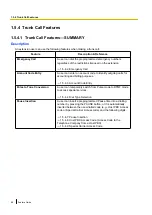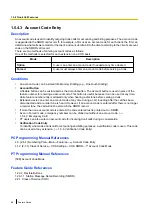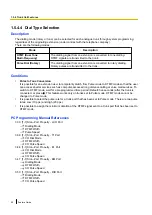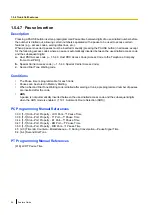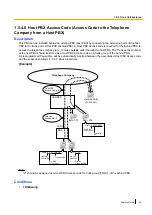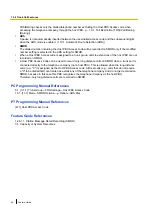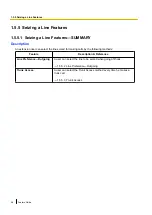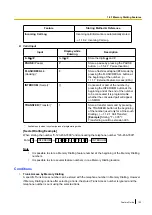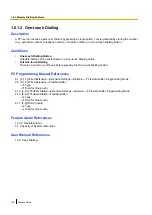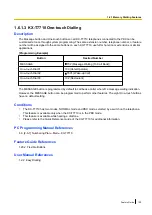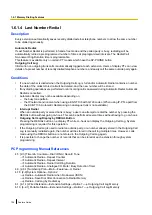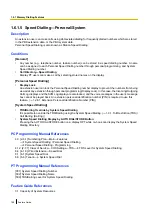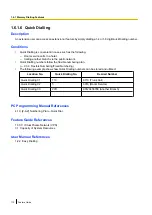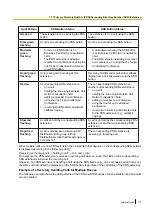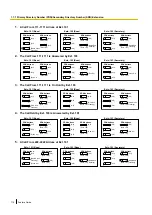
1.5.5.3 Trunk Access
Description
The following methods can be used to access a trunk:
Method
Description
Accessing method
Idle Line Access (Local
Access)
Selects an idle trunk
automatically from the assigned
trunk groups.
Dial the Idle Line Access number, or
press a L-CO button.
Trunk Group Access
Selects an idle trunk from the
corresponding trunk group.
Dial the Trunk Group Access number
and a trunk group number, or press a
G-CO button.
S-CO Line Access
Selects the desired trunk directly.
Dial the S-CO Line Access number
and the trunk number, or press the
S-CO button.
Conditions
•
COS programming determines the trunk groups available for making calls.
•
Trunk numbers can be referred on a trunk port basis.
•
Button Assignment
A flexible button can be customised as a G-CO, L-CO, or S-CO button as follows:
Type
Parameter
Loop-CO (L-CO)
No parameter (all assigned trunk groups through system programming
are applied.)
Group-CO (G-CO)
A specified trunk group.
Single-CO (S-CO)
A specified trunk.
It is possible to assign:
–
the same trunk to the S-CO button and to a G-CO button.
–
the same trunk group to more than one G-CO button.
–
more than one L-CO button.
Dialling the Trunk Access number selects a CO button in the following order: S-CO
®
G-CO
®
L-CO
•
Direct Trunk Access
Pressing an idle CO button automatically switches on the hands-free operation mode and allows a user to
use On-hook Dialling. The user need not press the SP-PHONE button, MONITOR button, or lift the handset.
•
Group Hunting Order for Idle Line Access
An idle trunk is selected from the trunk groups assigned for Idle Line Access. If multiple trunk groups are
available, the trunk group hunting sequence can be determined through system programming.
•
Trunk Hunting Order for Idle Line Access and Trunk Group Access
The trunk hunting sequence in a trunk group (from lowest numbered trunk, from highest numbered trunk
or rotation) can be determined through system programming.
•
A company name or customer name can be assigned on a trunk port basis so that the operator or extension
user can view the destination that the external caller is trying to reach before answering. This is useful, for
example, when multiple companies share the same operator.
•
It is possible to identify the trunk ports that have trunks connected. This prevents extension users from
originating a call to a trunk that is not connected.
100
Feature Guide
1.5.5 Seizing a Line Features
Summary of Contents for KX-NCP500
Page 13: ...Section 1 Call Handling Features Feature Guide 13...
Page 89: ...User Manual References 1 2 1 Basic Calling Feature Guide 89 1 5 4 Trunk Call Features...
Page 169: ...User Manual References 1 4 2 Holding a Call Feature Guide 169 1 13 1 Call Hold...
Page 185: ...1 7 2 Answering Denying a Paging Announcement Feature Guide 185 1 16 1 Paging...
Page 394: ...394 Feature Guide 1 33 1 Cellular Phone Features SUMMARY...
Page 395: ...Section 2 System Configuration and Administration Features Feature Guide 395...
Page 444: ...444 Feature Guide 2 4 6 Packet Internet Groper PING Confirmation...
Page 445: ...Section 3 Appendix Feature Guide 445...
Page 461: ...Index Feature Guide 461...
Page 467: ...Feature Guide 467 Notes...

